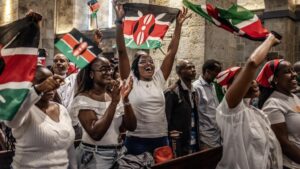One year after major protests against corruption, Kenyans are holding remembrance marches for victims of police violence. Renewed demonstrations follow the death of a teacher in custody. RFI spoke to a policy analyst on whether youth protests can drive real reform.
In 2024, widespread protests erupted across Kenya in response to a proposed bill that sought a significant increase in taxes, culminating on 25 June. These demonstrations were met with a forceful and violent response from the police.
At least 60 people were killed during protests in June and July 2024, and dozens more were illegally detained by security forces in the aftermath.
This year, the country’s youth are back on the streets protesting against that violence.
Although the government had called for calm since last summer, the death of Albert Ojwang in police custody – arrested for publishing a blog post criticising a police officer – sparked a new wave of protests in early June this year.
Douglas Kivoi, a policy analyst at the Kenya Institute for Public Policy Research and Analysis (Claw), told RFI that he was not surprised by the events, as they reflect the typical conduct of police officers in the country.
Kivoi has been studying the role and behaviour of the police in Kenya for many years.
“They are used in settling political scores and silencing any dissent that the powers are not comfortable with. So that is just one of the few that made it to the public domain. Many of those cases hardly make it to the media. If the family keeps quiet or is threatened with dire consequences,” he told RFI.
Read also:
Violence erupts in Kenya as ‘goons’ attack protesters over death in police custody
Kenya protests reignited by custody death, but ‘Gen Z’ movement remains divided
Silencing dissent in Tanzania, reckoning with genocide in Namibia











